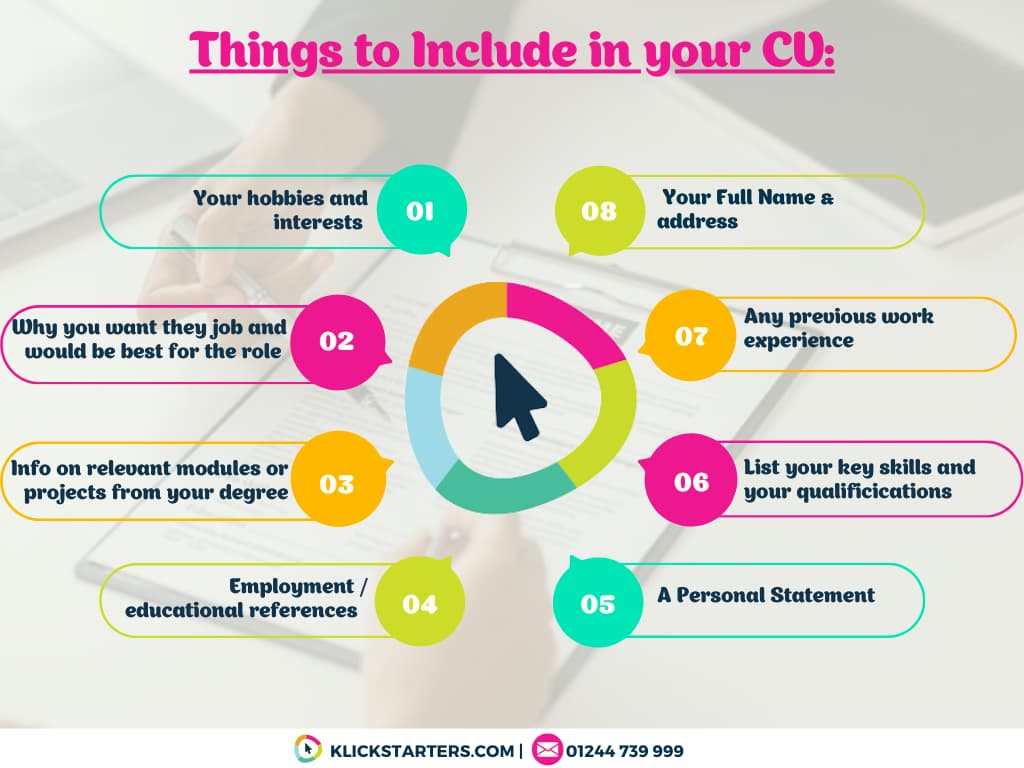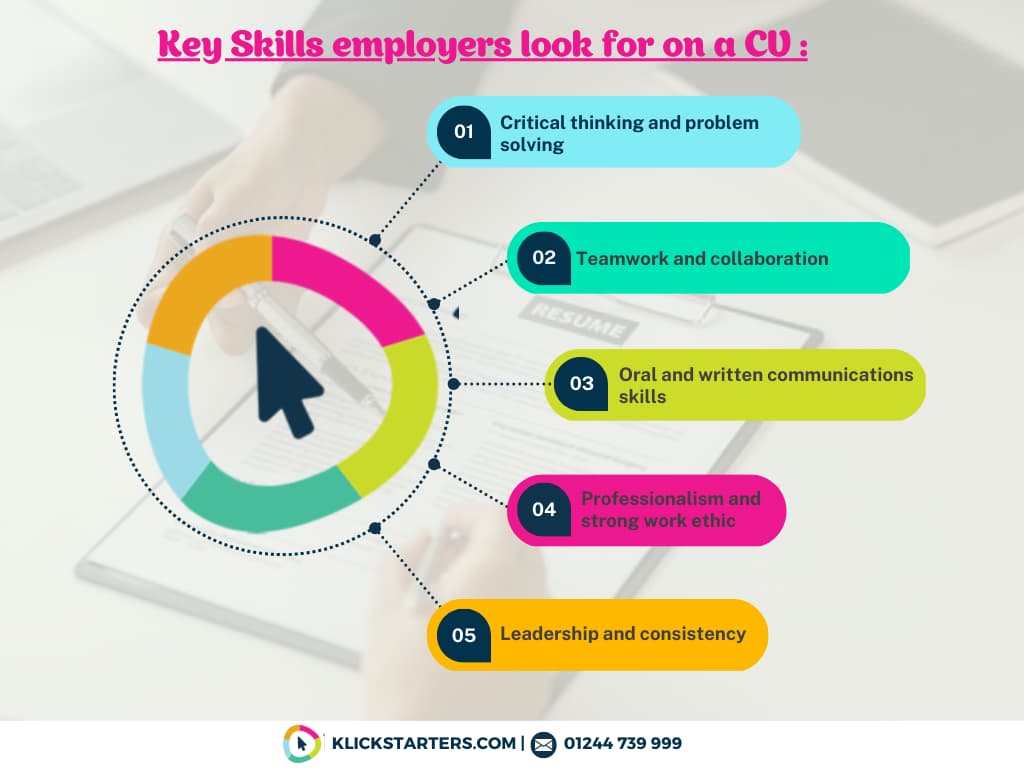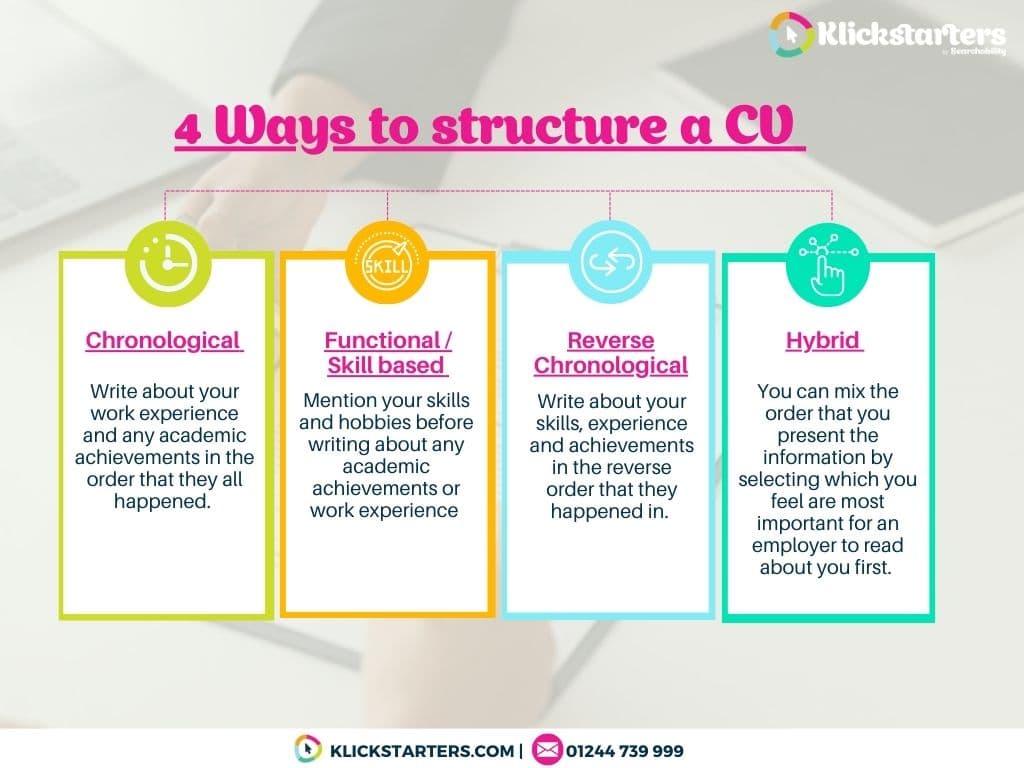
Writing a CV can be quite daunting if you don’t know what to include. You want to make sure your job search is as effective as possible and the best way to set yourself up for success is a strong CV. Below are some tips and key things to include and how to write your first CV to impress every employer!

It may seem obvious for some, but below is a list of a few essential things you should always include in a CV and reasons why.
Key things to include:

Unlike the information listed above, there are also other things you can add to stop your CV sounding the same as everyone else’s.
While this may sound obvious and you may not enjoy boasting about all your achievements and reasons why you’d be great for the job, it’s a key thing to have in mind while writing your CV. It’s extremely unlikely you’ll be the only person applying for the role so make sure to set yourself out from the rest and really let the employers know exactly why they should be hiring you!
Once you know what information to include the next challenge is knowing what layout to use and how to prioritise which parts will get seen first by hiring managers. Things like having colours and text in bold are simple ways to draw the eye to key pieces of information that you really don’t want to be missed by an employer. When deciding what to write about first and which bits to leave till last, go back to the idea of selling yourself and make sure you don’t save all the best bits till last! Sometimes employers will just skim over a CV so you want to make sure it looks eye catching with all your key skills and qualifications easy to be read.
Chronological - This structure involves you writing about your experiences and qualifications in the order that they happened. This is a great way for employers to be able to see your journey and career progression.
Functional / Skill based - This structure will allow you to draw the employers attention to your skills as oppose to your experience or education. This structure is usually favored for people writing their first CV as they often have less work experience so would rather draw attention to their personality and skills.
Reverse chronological - This is usually the most common style of CV, it follows the structure of writing about the most recent achievements and qualifications that you've obtained then going back into the first role you had etc. This type of CV is great to ensure employers see your main achievements first.
Hybrid - This is a more creative and expressive way of structuring your CV as it involves you combining skills and chronological CV structures. This can give you a lot more freedom to order whichever pieces of information you feel are most important for an employer to read about you first.
Below is a visual showing the different types of structures you can use to set out your CV.

If you’re still unsure how to write your CV, take a look at our CV Builder. We have a CV Builder on our website which allows you to generate your own CV template in just a few simple steps. Klickstarters are always here to help you with your job search for tech roles, if you have any questions please contact a member of our team on [email protected] or alternatively call 01244 739 999.